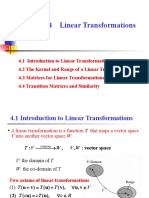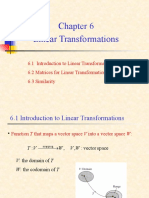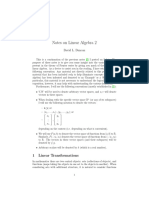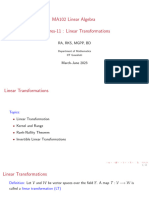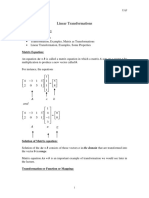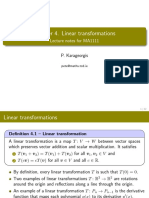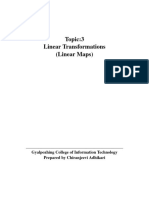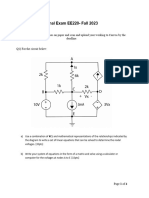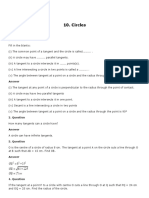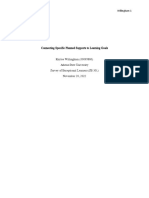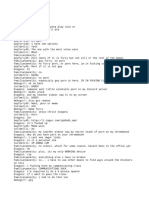0% found this document useful (0 votes)
69 views29 pagesLinear Transformations Guide
The document summarizes key concepts from Chapter 6 of a linear algebra textbook. It introduces linear transformations, defining them as functions between vector spaces that preserve vector addition and scalar multiplication. It discusses properties of linear transformations including their kernel, range, and representation via matrices. It also covers related topics like subspaces and examples of linear transformations.
Uploaded by
mjiabir12007Copyright
© © All Rights Reserved
We take content rights seriously. If you suspect this is your content, claim it here.
Available Formats
Download as PDF, TXT or read online on Scribd
0% found this document useful (0 votes)
69 views29 pagesLinear Transformations Guide
The document summarizes key concepts from Chapter 6 of a linear algebra textbook. It introduces linear transformations, defining them as functions between vector spaces that preserve vector addition and scalar multiplication. It discusses properties of linear transformations including their kernel, range, and representation via matrices. It also covers related topics like subspaces and examples of linear transformations.
Uploaded by
mjiabir12007Copyright
© © All Rights Reserved
We take content rights seriously. If you suspect this is your content, claim it here.
Available Formats
Download as PDF, TXT or read online on Scribd
/ 29



